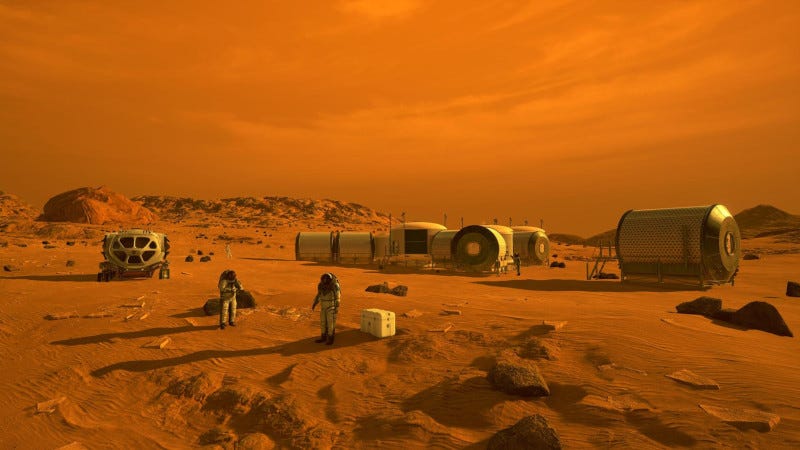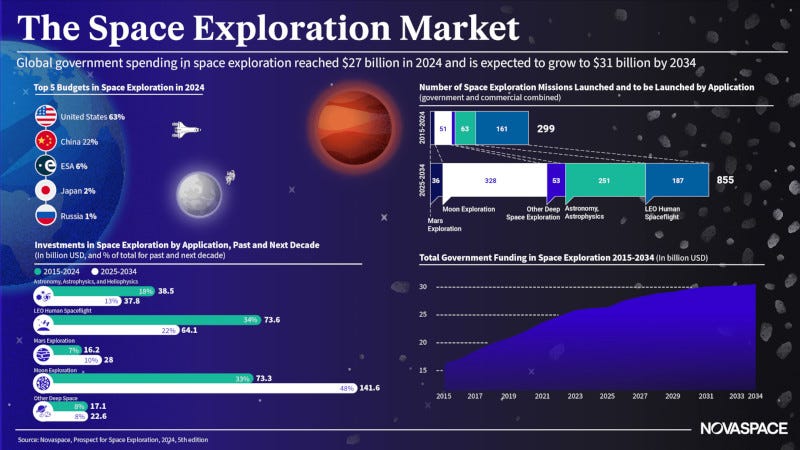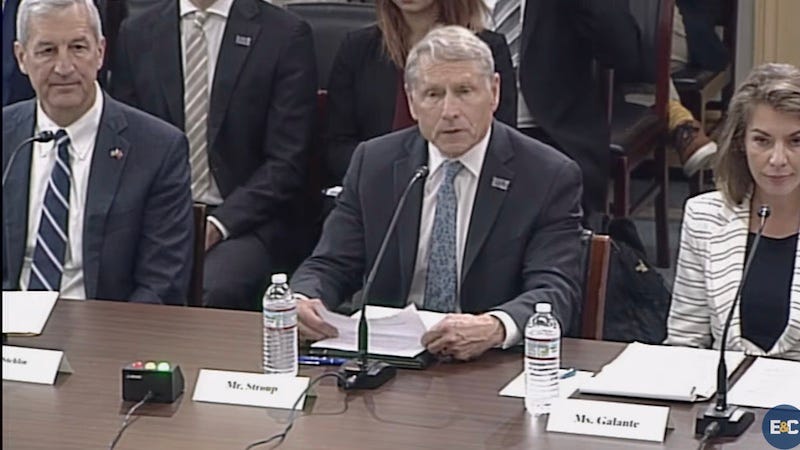The first look at the NASA budget, and a self-assembling space architecture. Here are some of the top stories from The Journal of Space Commerce this week.
The FY26 federal budget proposed by the Trump administration would accelerate NASA's human space exploration of the Moon and Mars with what the administration calls a fiscally responsible portfolio of missions.
The Budget refocuses NASA funding on beating China back to the Moon and on putting the first human on Mars ... allocating over $7 billion for lunar exploration and introducing $1 billion in new investments for Mars-focused programs. To achieve these objectives, the Budget would streamline the NASA workforce, information technology services, NASA Center operations, facility maintenance, and construction and environmental compliance activities. The Budget also terminates multiple unaffordable missions and reduces lower priority research, resulting in a leaner Science program that reflects a commitment to fiscal responsibility.
NASA says it will coordinate closely with its partners to execute these priorities and investments as efficiently and effectively as possible.
-0-
The latest Novaspace market intelligence report, Prospects for Space Exploration, provides a detailed outlook on government and commercial space initiatives through 2034.
The report finds that global government investment in space exploration totaled $27 billion in 2024 and is projected to grow to nearly $31 billion by 2034. Lunar exploration will lead this expansion, with funding expected to rise from $12 billion to $15 billion, while Mars exploration is projected to grow at an 11% annual rate, fueled by upcoming sample-return missions.
The report forecasts nearly 330 lunar missions between 2025 and 2034, driven by a mix of government programs and private sector ventures. A substantial share of these missions is expected to fall under NASA’s Artemis program, reflecting a growing global ambition for sustained lunar presence and infrastructure.
-0-
The House Subcommittee on Communications and Technology (Committee on Energy and Commerce) held a hearing recently titled "Global Networks at Risk: Securing the Future of Communications Infrastructure".
The committee recognized that satellites play a critical role in civilian and military communications. With that in mind, one of the witnesses invited to provide testimony at the hearing was Tom Stroup, president of the Satellite Industry Association.
Stroup told Ex Terra Media that satellite operators are well aware of the challenges of security in space, and have processes in place to assure the safety of spacecraft and fidelity of data.
"Many of the members of our industry provide dual-use services. So they are offering service not only to the commercial sector but also to the U.S. Government including the military. That makes the subject to attacks that we may not otherwise be subject to. But as a result of that, the industry has taken steps to minimize the impact. And one of the things I really sought to emphasize was the resilience based on the multiple, diverse delivery paths that we have," Stroup said. "And by that, I mean that most satellite operators have multiple satellites, whether they're geo-stationary or non-geo-stationary systems. And there's an opportunity to switch (between) satellites. And a number of companies deploy multi-orbit capabilities. So if there is an impact on a satellite there's an opportunity to switch to a different orbit. And one of the things that is provided as a result of this is not just the multi-orbit capability, but also multi-frequency capability. So I'd say that we are subject to some type of attack. But the industry has taken multiple steps to be able to minimize the effect of it."
Stroup told the committee that the association's members are dedicated to advancing national interests, ensuring the competitiveness of satellite companies in the U.S. and globally, and driving progress for the benefit of all Americans.
-0-
As Eutelsat moves into its next phase after the integration with OneWeb and fully aligned with an IRIS2 future, the company this week announced the appointment of Jean-François Fallacher (pictured) as its new CEO. The appointment was decided at a Board Meeting held on May 4th, 2025 on the recommendation of the Nomination and Governance Committee. It will be effective on June 1st. This appointment comes as a natural change that fully aligns Eutelsat to the telecom ecosystem.
A seasoned telecoms professional, Fallacher joins Eutelsat following a lengthy career at Orange where he held the position of executive vice president and Chief Executive Officer of Orange France. Prior to that, he led Orange’s operations in various countries including Spain, Romania and Poland. Before his career at Orange, he held several roles in R&D, sales and operations, including Chief Operating Officer of Wanadoo in the Netherlands and Chief Executive Officer of Sofrecom, a consulting company specializing in the telecoms sector
Fallacher succeeds Eva Berneke, who has steered the company since January 2022, presiding over some of its most significant strategic and operational achievements. These include the merger with and integration of OneWeb in 2023 to create the world’s only LEO / GEO satellite operator.
-0-
The Aurelia Institute is a nonprofit organization based in Cambridge, Massachusetts, dedicated to advancing humanity's future in space through research, education, and policy development. Their mission focuses on creating scalable space habitats, fostering public engagement with space exploration, and addressing the ethical and societal implications of life beyond Earth.
Their TESSERAE Project is a modular, self-assembling space architecture system designed to autonomously construct habitats in microgravity environments.
Evan Hilgemann is Senior Mechatronics Engineer for The Aurelia Institute. He told me on The Ex Terra Podcast that the TESSERAE project will use a system of tiles that will autonomously connect to one another using magnets to create a unique space habitat.
"Once they're in space they can form space stations, they're reusable, they're replaceable, and they can be used to form much larger structures ... than you can just fit into that launch fairing. So to form those very large spaces in orbit, you have to go to some kind of on-orbit assembly or construction. It's not something you can just launch from the ground with very large rockets."
These structures aim to support human life, scientific research, and other activities in Low-Earth Orbit.
And those are some of the top stories we covered for you on The Journal of Space Commerce this week. You can get daily updates on space commerce by subscribing to The Journal of Space Commerce on Substack at www.exterrajsc.com. And please consider becoming a paid subscriber. Whether you’re a space professional or enthusiast, paid subscribers have first access to premium articles and podcasts focused on the new space economy. Just visit www.exterrajsc.com and help keep The Journal of Space Commerce independent as we chronicle, cajole and, when necessary, critique the commercial space industry.
Theme Stock Music Provided by Pond 5
You Might Have Missed
ispace Selected by Japan’s Strategic Space Fund for Lunar Satellite Program
Testing Validates Astrobotic Moon Landing Sensors, Subsystems

















